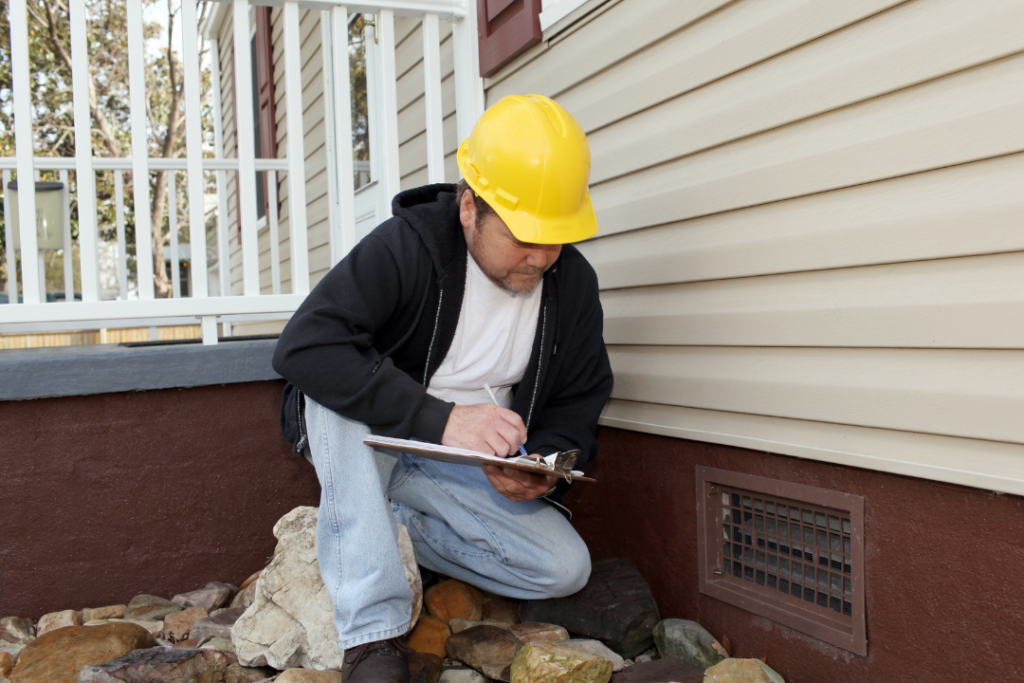Owning a home comes with a lot of responsibilities, and one of the most critical areas to monitor is your foundation. Twice a year, it’s a good idea to walk around your property and inspect your foundation for signs of water damage, pest infestations, or structural weaknesses. Catching these issues early can save you from more significant, costly repairs down the road.
What to Look For
1. Water Pooling Near Your Foundation
After heavy storms, check around your foundation for any pooling water. Standing water near your foundation can indicate drainage issues. Simple fixes, such as cleaning out your gutters, adjusting your downspouts to ensure they discharge water at least 5 feet away from your home, or correcting the slope of your landscape, can often resolve these problems.
2. Interior Basement Inspection
Once you’ve completed your external inspection, head inside to check your basement. Pay attention to the corners, looking for water stains or dampness on the floors or where the walls meet the floor. A musty smell or visible water damage may indicate mold or mildew growth behind the walls, which can affect your home’s air quality and pose health risks to your family. If you detect any of these issues, it’s time to call Rapid Foundation Repair for a complete foundation inspection.
3. Signs of Structural Problems
Foundation issues often reveal themselves in other areas of the home. Sticky doors and windows, cracks in walls—especially over doorways and windows—or gaps forming where walls meet ceilings are all signs of potential foundation movement. Cracks in tile floors can also be a symptom of settling or shifting foundations. If the soil around your foundation is saturated, it can put more pressure on basement walls, leading to bowing or leaning walls. These are serious concerns that require immediate attention.
Why Foundation Cracks Matter
Foundation and basement cracks can lead to more extensive issues if ignored. Water will exploit even the smallest crack, causing it to expand and allowing more moisture into your basement. Over time, the pressure from the soil outside your home can exacerbate these cracks, leading to bowing or leaning walls, which can threaten the structural integrity of your home. Additionally, cracks provide entry points for insects and rodents, further compromising the safety and cleanliness of your home.
Get a Professional Foundation Inspection
At the first sign of foundation problems, it’s essential to get a professional inspection. A thorough inspection from the experts at Rapid Foundation Repair will help diagnose the underlying issues and provide a detailed plan for repairs.
Solutions to Foundation Problems
At Rapid Foundation Repair, we use industry-leading products from Earth Contact Products (ECP) for reliable foundation repair. Depending on your specific needs, here are some potential solutions we may recommend:
- Helical Piers: These piers are screwed into stable soil beneath your foundation, offering the support needed to lift and stabilize your home. This method prevents further settling, and installation is quick, minimally invasive, and effective year-round.
- Wall Anchors: For bowing or leaning walls, wall anchors provide essential stabilization, preventing further movement and restoring structural integrity.
- Steel Push Piers: These piers are driven into stable soil to provide foundational support, helping to lift the home back into place. Each pier is load-tested for maximum stability.
- Sump Pump Systems: If water issues are a concern, installing a sump pump system can help manage basement flooding and moisture buildup
Stay Proactive with Rapid Foundation Repair
If you notice any signs of foundation issues, don’t wait. Contact Rapid Foundation Repair to schedule a comprehensive inspection. Our team will assess the condition of your foundation and recommend the best course of action, ensuring that your home remains safe, stable, and healthy for you and your family.

